

UFO Museum
The Roswell Incident involved the recovery of materials near Roswell, New Mexico, USA, on July 7, 1947, which has since become the subject of intense speculation, rumor and questioning. There are widely divergent views on what actually happened and passionate debate about what evidence can be believed. The United States military maintains that what was recovered was a top-secret research balloon that had crashed. Many UFO proponents believe the wreckage was of a crashed alien craft and that the military covered up the craft's recovery. The incident has turned into a widely-recognized and referred to pop culture phenomenon, and for some, Roswell is synonymous with UFOs. It likely ranks as the most famous alleged UFO incident.
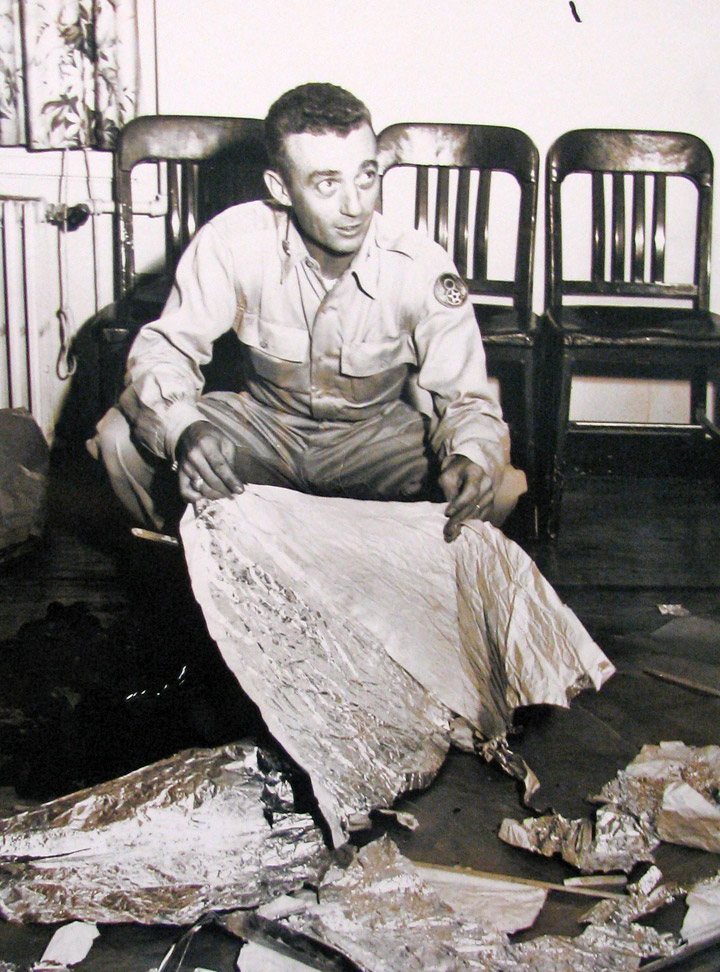
material recovered
On July 8, 1947, the Roswell Army Air Field (RAAF) issued a press release
stating that personnel from the field's 509th Bomb Group had recovered a crashed
"flying disc" from a ranch near Roswell, sparking intense media interest. Later
the same day, the Commanding General of the Eighth Air Force stated that, in
fact, a weather balloon had been recovered by RAAF personnel, rather than a
"flying saucer." A subsequent press conference was called, featuring debris said
to be from the crashed object that seemed to confirm the weather balloon
description. The case was quickly forgotten and almost completely ignored, even
by UFO researchers, for more than 30 years. Then, in 1978, ufologist Stanton T.
Friedman interviewed Major Jesse Marcel, who was involved with the original
recovery of the debris in 1947. Marcel expressed his belief that the military
had covered up the recovery of an alien spacecraft. His story circulated through
UFO circles, being featured in some UFO documentaries at the time. In February
1980, The National Enquirer ran its own interview with Marcel, garnering
national and worldwide attention for the Roswell incident.
Additional witnesses and reports emerged over the following years. They added
significant new details, including claims of a large military operation
dedicated to recovering alien craft and aliens themselves, at as many as 11
crash sites, and alleged witness intimidation. In 1989, former mortician Glenn
Dennis put forth a detailed personal account, wherein he claimed that alien
autopsies were carried out at the Roswell base.
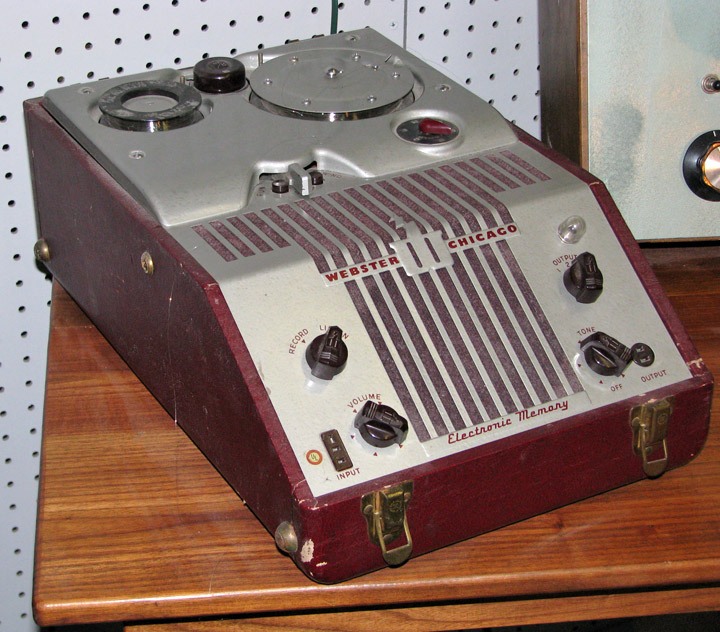
wire recorder
used to record voice at that time
In response to these reports, and after congressional inquiries, the General
Accounting Office launched an inquiry and directed the Office of the Secretary
of the Air Force to conduct an internal investigation. The result was summarized
in two reports. The first, released in 1995, concluded that the reported
recovered material in 1947 was likely debris from a secret government program
called Project Mogul. The second report, released in 1997, concluded that
reports of recovered alien bodies were likely a combination of innocently
transformed memories of military accidents involving injured or killed
personnel, and the recovery of anthropomorphic dummies in military programs like
Project High Dive conducted in the 1950s, and hoaxes perpetrated by various
witnesses and UFO proponents. The psychological effects of time compression and
confusion about when events occurred explained the discrepancy with the years in
question. These reports were dismissed by UFO proponents as being either
disinformation or simply implausible, though significant numbers of UFO
researchers discount the probability that any alien crash was in fact involved.
On June 14 William "Mac" Brazel noticed some strange debris while working on the
Foster ranch, where he was foreman, some 70 miles (110 km) north of Roswell.
This exact date (or "about three weeks" before July 8) is a point of contention
but is repeated in several initial accounts, in particular the stories that
quote Brazel and in a telex sent a few hours after the story broke quoting
Sheriff George Wilcox (who Brazel first contacted). However, the initial press
release from the Roswell Army Air Field said the find was "sometime last week,"
suggesting Brazel found the debris in early July. Brazel told the Roswell Daily
Record that he and his son saw a "large area of bright wreckage made up of
rubber strips, tinfoil, a rather tough paper and sticks." He paid little
attention to it but returned on July 4 with his son, wife and daughter to gather
up the material.[10] Some accounts have described Brazel as having gathered some
of the material earlier, rolling it together and stashing it under some brush.
The next day, Brazel heard reports about "flying discs" and wondered if that was
what he had picked up. On July 7, Brazel saw Sheriff Wilcox and "whispered kinda
confidential like" that he may have found a flying disc. Another account quotes
Wilcox as saying that Brazel reported the object on July 6.
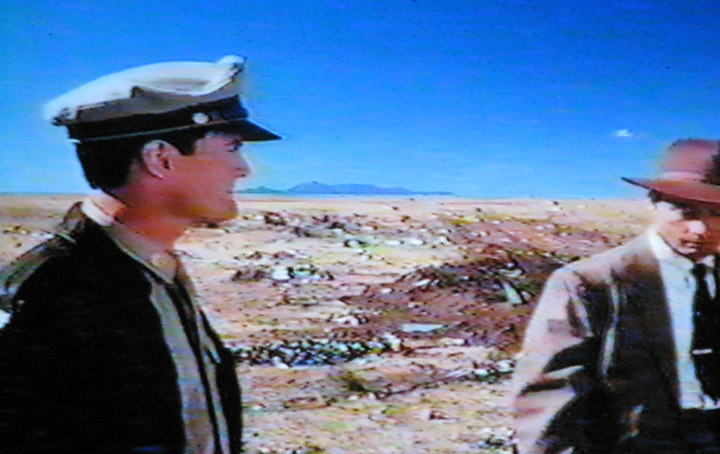
going to the crash site
from the film "Roswell, the U.F.O. Cover-up"
Sheriff Wilcox called Roswell Army Air Field. Major Jesse Marcel and a "man in
plainclothes" accompanied Brazel back to the ranch where more pieces were picked
up. "[We] spent a couple of hours Monday afternoon [July 7] looking for any more
parts of the weather device", said Marcel. "We found a few more patches of
tinfoil and rubber." They then attempted to reassemble the object, but Brazel
said they could not. Marcel took the debris to Roswell Army Air Field the next
morning.
As described in the July 9, 1947, edition of the Roswell Daily Record,
“ "The balloon which held it up, if that was how it worked, must have been 12
feet long, [Brazel] felt, measuring the distance by the size of the room in
which he sat. The rubber was smoky gray in color and scattered over an area
about 200 yards in diameter. When the debris was gathered up, the tinfoil,
paper, tape, and sticks made a bundle about three feet long and 7 or 8 inches
thick, while the rubber made a bundle about 18 or 20 inches long and about 8
inches thick. In all, he estimated, the entire lot would have weighed maybe five
pounds. There was no sign of any metal in the area which might have been used
for an engine, and no sign of any propellers of any kind, although at least one
paper fin had been glued onto some of the tinfoil. There were no words to be
found anywhere on the instrument, although there were letters on some of the
parts. Considerable Scotch tape and some tape with flowers printed upon it had
been used in the construction. No strings or wires were to be found but there
were some eyelets in the paper to indicate that some sort of attachment may have
been used.” ”
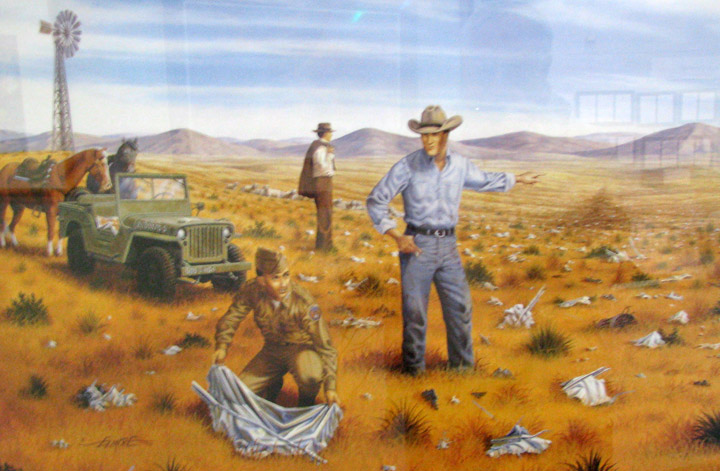
inspecting the debris
A telex sent to an FBI office from their office in Dallas, Texas, quoted a major
from the Eighth Air Force on July 8:[14]
“ "THE DISC IS HEXAGONAL IN SHAPE AND WAS SUSPENDED FROM A BALLON [sic] BY
CABLE, WHICH BALLON [sic] WAS APPROXIMATELY TWENTY FEET IN DIAMETER. MAJOR
CURTAN FURTHER ADVISED THAT THE OBJECT FOUND RESEMBLES A HIGH ALTITUDE WEATHER
BALLOON WITH A RADAR REFLECTOR, BUT THAT TELEPHONIC CONVERSATION BETWEEN THEIR
OFFICE AND WRIGHT FIELD HAD NOT [unintelligible] BORNE OUT THIS BELIEF." ”
Early on Tuesday, July 8, the Roswell Army Air Field issued a press release
which was immediately picked up by numerous news outlets:
“ "The many rumors regarding the flying disc became a reality yesterday when the
intelligence office of the 509th Bomb group of the Eighth Air Force, Roswell
Army Air Field, was fortunate enough to gain possession of a disc through the
cooperation of one of the local ranchers and the sheriff's office of Chaves
County. The flying object landed on a ranch near Roswell sometime last week. Not
having phone facilities, the rancher stored the disc until such time as he was
able to contact the sheriff's office, who in turn notified Maj. Jesse A. Marcel
of the 509th Bomb Group Intelligence Office. Action was immediately taken and
the disc was picked up at the rancher's home. It was inspected at the Roswell
Army Air Field and subsequently loaned by Major Marcel to higher headquarters."
”
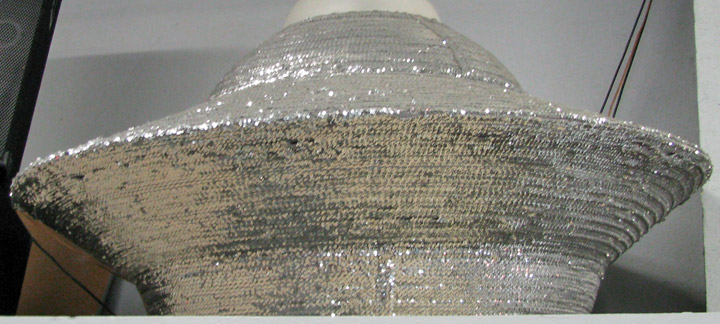
Flying Saucer ?
Colonel William H. Blanchard, commanding officer of the 509th, contacted General
Roger M. Ramey of the Eighth Air Force in Fort Worth, Texas, and Ramey ordered
the object be flown to Fort Worth Army Air Field. At the base, Warrant Officer
Irving Newton confirmed Ramey’s preliminary opinion, identifying the object as
being a weather balloon and its "kite," a nickname for a radar reflector
used to track the balloons from the ground. Another news release was issued,
this time from the Fort Worth base, describing the object as being a "weather
balloon."
In Fort Worth, several news photographs were taken that day of debris said to be
from the object. The debris was consistent with the general description of a
weather balloon with a kite. Ramey, Col. Thomas J. Dubose and Marcel all posed
with the debris. Brazel, in interviews that day with the Roswell Daily Record
and Associated Press, dismissed the military's "weather balloon" assertion.
Citing several other weather balloons he had recovered previously on the ranch,
he said: "I am sure what I found was not any weather observation balloon." The
incident was quickly forgotten.
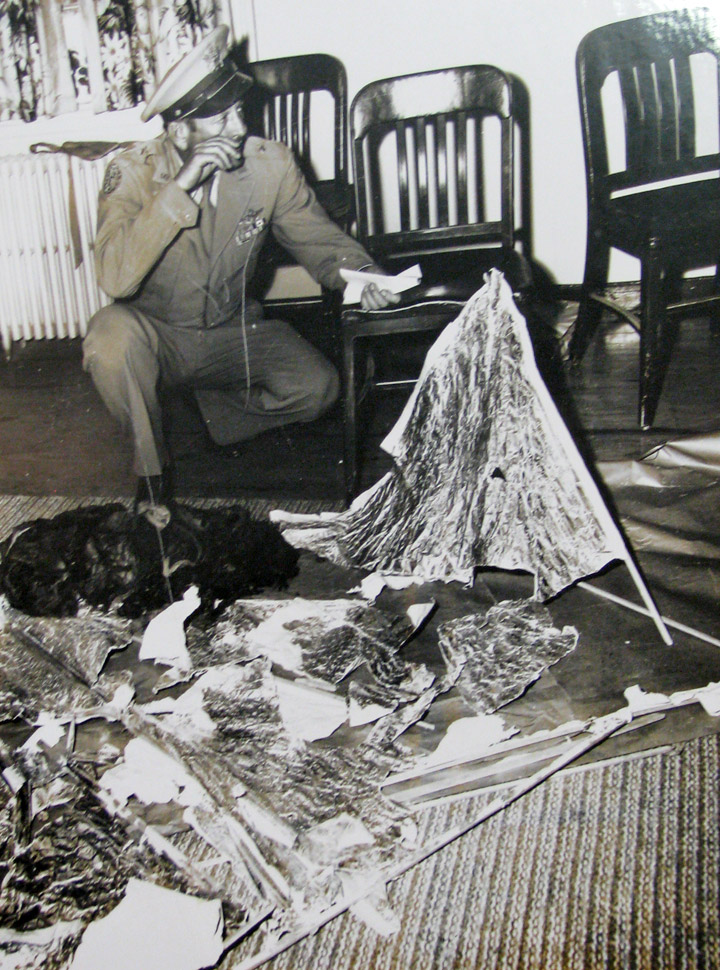
later Official Photo
In 1978, former nuclear physicist and author Stanton T. Friedman interviewed
Jesse Marcel, the only person known to have accompanied the Roswell debris from
where it was recovered to Fort Worth. Over the next 15 years or so, the accounts
he and others gave elevated Roswell from a forgotten incident to perhaps the
most famous UFO case of all time.
By the early 1990s, UFO researchers such as Friedman, William Moore, Karl Pflock,
and the team of Kevin Randle and Don Schmitt had interviewed several hundred
people who had, or claimed to have had, a connection with the events at
Roswell in 1947. Additionally, hundreds of documents were obtained via Freedom
of Information Act requests, as were some apparently leaked by insiders, such as
the disputed "Majestic 12" documents.
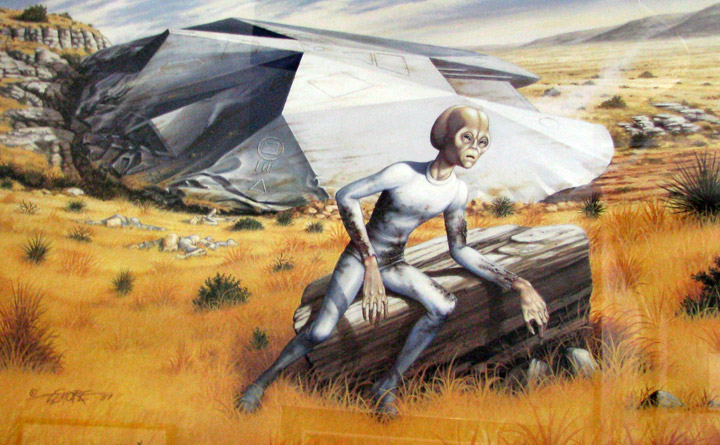
depiction of the crash site
Their conclusions were that at least one alien craft had crashed in the Roswell
vicinity, that aliens, some possibly still alive, were recovered, and that a
massive cover-up of any knowledge of the incident was put in place.
Numerous books, articles, television specials and even a made-for-TV movie
brought the 1947 incident fame and notoriety so that by the mid-1990s, strong
majorities in polls, such as a 1997 CNN/Time poll, believed that aliens had
visited earth and specifically that aliens had landed at Roswell and the
government was covering up the fact.
A new narrative emerged which was at strong odds with what was reported in 1947.
This narrative evolved over the years from the time the first book on Roswell
was published in 1980 as many new witnesses and accounts emerged, drawn out in
part by publicity on the incident. Though skeptics had many objections to the
plausibility of these accounts, it was not until 1994 and the publication of the
first Air Force report on the incident that a strong counter-argument to the
presence of aliens was widely publicized.
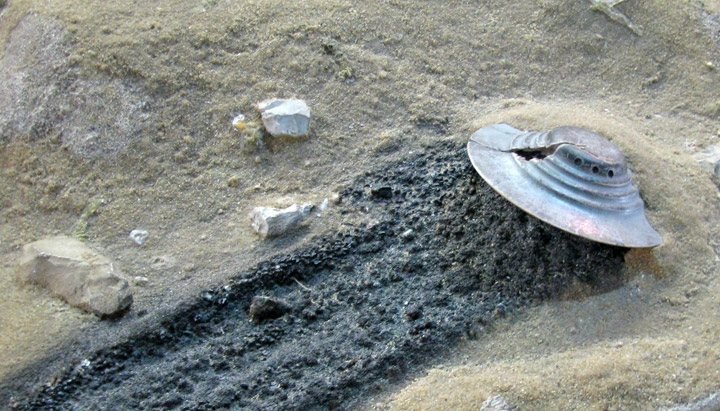
simulation of the crash site
Numerous scenarios emerged from these authors as to what they felt were the true
sequence of events, depending on which witness accounts were embraced or
dismissed, and what the documentary evidence suggested. This was especially true
in regards to the various claimed crash and recovery sites of alien craft, as
various authors had different witnesses and different locations for these
events.
However, the following general outline from UFO Crash at Roswell (1991) by Kevin
D. Randle and Donald R. Schmitt is common to most of these accounts:
“ "A UFO crashed northwest of Roswell, New Mexico, in the summer of 1947. The
military acted quickly and efficiently to recover the debris after its existence
was reported by a ranch hand. The debris - unlike anything these highly trained
men had ever seen - was flown without delay to at least three government
installations. A cover story was concocted to explain away the debris and the
flurry of activity. It was explained that a weather balloon, one with a new
radiosonde target device, had been found and temporarily confused the personnel
of the 509th Bomb Group. Government officials took reporters' notes from their
desks and warned a radio reporter not to play a recorded interview with the
ranch hand. The men who took part in the recovery were told never to talk about
the incident. And with a whimper, not a bang, the Roswell event faded quickly
from public view and press scrutiny." ”
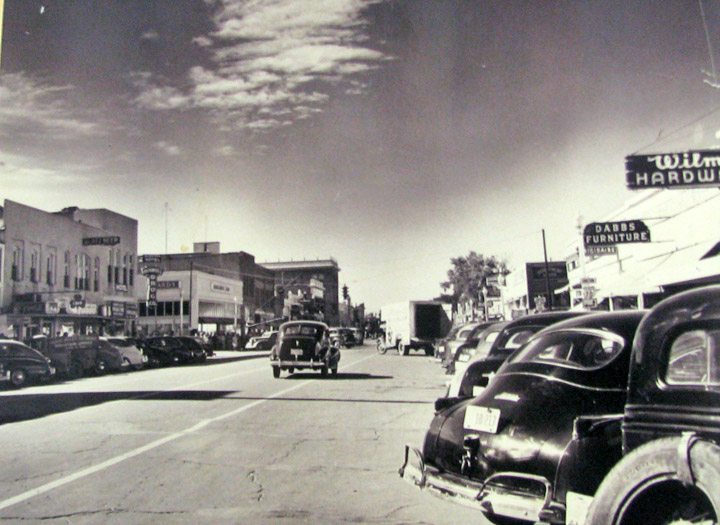
Roswell in 1947
What follows are accounts of the sequence of events according to some of the
major books published on the subject.
The first book on the subject, The Roswell Incident by Charles Berlitz and
William L. Moore, was published in 1980. The authors at the time said they had
interviewed more than ninety witnesses. Though uncredited, Stanton Friedman did
substantial research for the book. The book featured accounts of debris
described by Jesse Marcel as “nothing made on this earth.” (p.28) Additional
accounts suggested that the material Marcel recovered had super-strength and
other attributes not associated with anything known of terrestrial origin, and
certainly not anything associated with a “weather balloon.” The book also
introduced the contention that debris recovered by Marcel at the Foster ranch
was substituted for debris from a weather device (p.33; pp. 67-69) as part of a
cover-up. Marcel posed with the actual debris, then the material was switched
and others posed with the switched debris. The actual debris recovered from the
ranch – which, the authors claimed, was from a crashed UFO – was not permitted a
close inspection by the press. Also described were efforts by the military to
discredit and “counteract the growing hysteria towards flying saucers.” (p.42)
Additionally, various accounts of witness intimidation were included, in
particular reports of the incarceration of Mac Brazel, who reported the debris
in the first place.
The book also introduced an alien account by Barney Barnett who had died years
earlier. Friends said he had on numerous occasions described the crash of a
flying saucer and the recovery of alien corpses in the Socorro area, about 150
miles (240 km) west of the Foster ranch. He and a group of archaeologists who
happened to be in the vicinity had stumbled upon an alien craft and its
occupants, only to be led away by military personnel. (p.53-62) Further accounts
suggested that these aliens and their craft were shipped to Edwards Air Force
Base (known then as Muroc Army Air Field) in California. (Ch.5) The book
suggested that either there were two crafts which crashed or debris from the
vehicle Barnett had described had landed on the Foster ranch after an explosion.
(p.62)
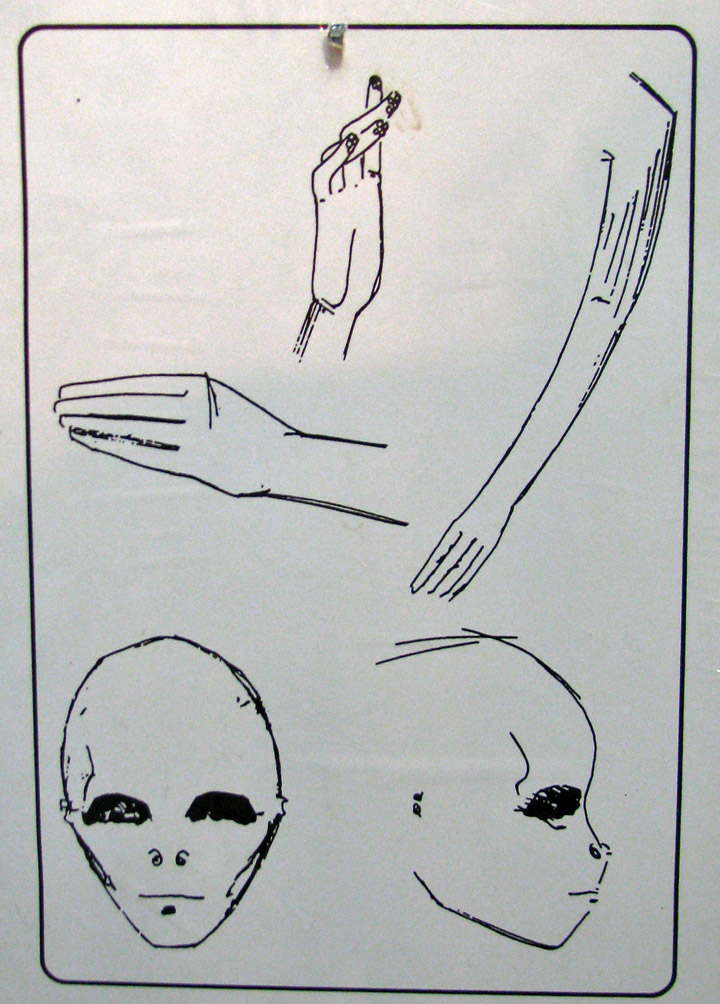
drawing made by a nurse who attended the crash victims
A new time-line which had important differences with the time-line suggested by
at least some of the initial accounts was introduced. The discovery of the
debris was in early July, not the mid-June date stated in the story quoting Mac
Brazel which suggested the debris was from a weather balloon. Marcel described
Brazel (who had died years before) as saying he had found the debris only
several days before July 7, the morning after he had heard "an odd explosion."
(p.64) Another account described a local couple seeing a "big glowing object"
flying over the area on July 2 - an account mentioned in contemporary news
reports - (p.21) and the Barnett story was said to have occurred on July 3.
(p.53)
When, exactly, Marcel and "Cavitt" (Sheridan Cavitt, Marcel could not recall his
first name) went to see the debris is not clear as he says "We heard about it on
July 7" on page 63, but seems to say that he was contacted the day before when
he said "[on] Sunday, July 6, Brazel decided he had better go into town and
report this to someone," who in turn called Marcel. (p.65) In 1947, Marcel was
quoted as saying he visited the ranch on Monday, July 7.
Marcel described returning to Roswell the evening of July 7 only to discover
that news of the discovery of a flying disc had leaked out. Calls were made to
his house, including a visit from a reporter, but he could not confirm the
reports. "The next morning, that written press release went out, and after that
things really hit the fan." (p.67)
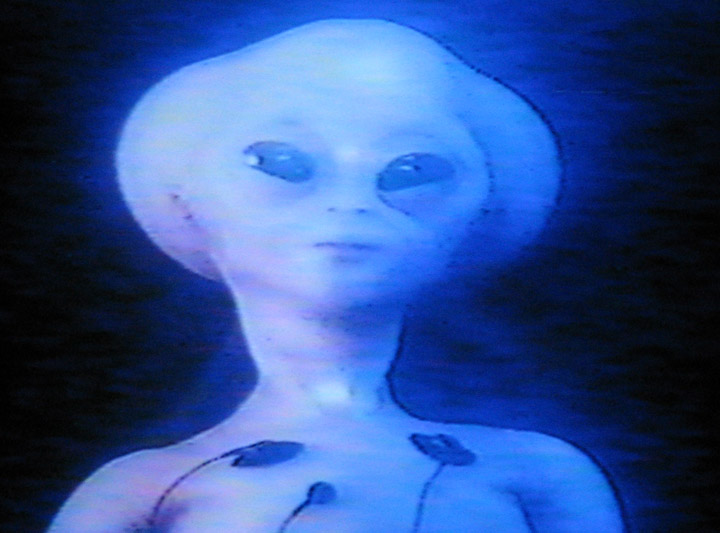
an Alien being given a Medical exam
from the film "Roswell, the U.F.O. Cover-up"
The book suggested that the military orchestrated Brazel's testimony to make it
appear a mundane object had landed on the ranch, though the book did not
explicitly say that the military instructed Brazel to give a mid-June date for
his discovery. (The mid-June date is not mentioned in the book.) "Brazel...
[went] to great pains to tell the newspaper people exactly what the Air Force
had instructed him to say regarding how he had come to discover the wreckage and
what it looked like..." (p.40)
In 1991, with the benefit of a decade of publicity on the incident and numerous
new witness interviews, Kevin D. Randle and Donald R. Schmitt published UFO
Crash at Roswell. Here, new witnesses generally added more detail that tended to
corroborate the account found in The Roswell Incident, such as more accounts of
the unearthly qualities of the recovered debris, interviews with Col. Thomas
Dubose suggesting a switch of material and cover-up had occurred, and new
accounts of intimidation of witnesses like Mac Brazel. Marcel, in this book, had
never posed with the actual debris, it was switched before the press saw any of
it.

from the film "Roswell, the U.F.O. Cover-up"
Timelines were slightly altered. The date that Brazel reported the debris and
Marcel went to the ranch was said to be Sunday, July 6, not the next day as some
of the original accounts suggested, and The Roswell Incident had left unclear.
Additionally, Marcel and an unidentified counter-intelligence agent spent the
night at the ranch, something not mentioned previously. They gathered material
on Monday, then Marcel dropped by his house on the way to the Roswell base in
the early hours of Tuesday, July 8.
Significant new details emerged, including accounts of a "gouge... that extended
four or five hundred feet" at the ranch (p.200) and descriptions of an elaborate
cordon and recovery operation. (Several witnesses in The Roswell Incident
described being turned back from the Foster ranch by armed military police, but
more extensive descriptions were lacking.)
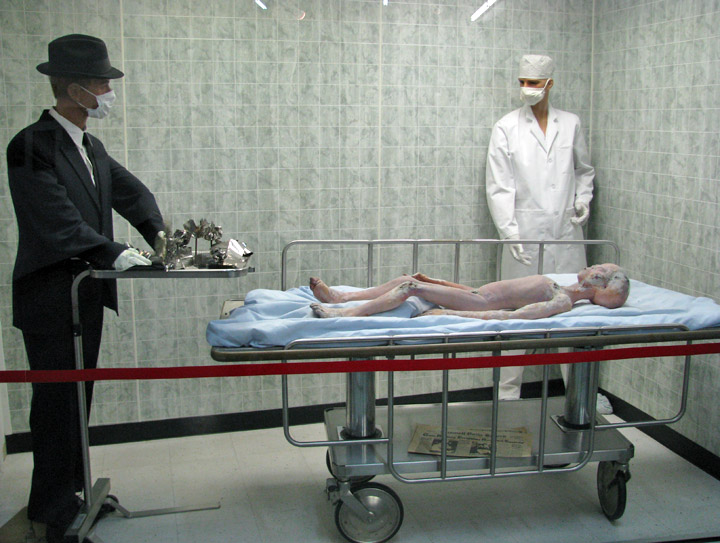
props used in the film "Roswell, the U.F.O. Cover-up"
The Barnett accounts were mentioned, though the dates and locations were changed
from the accounts found in The Roswell Incident. In this new account, Brazel is
described as leading the Army to a second crash site on the ranch, where the
Army was "horrified to find civilians [including Barnett] there already."
(p.206)
New witness accounts added substantially to the reports of aliens and their
recovery. Glenn Dennis had emerged as an important witness after calling the
hotline when an episode of “Unsolved Mysteries” featured the Roswell incident in
1989. His descriptions of Roswell alien autopsies were the first to place alien
corpses at the Roswell Army Air Base.
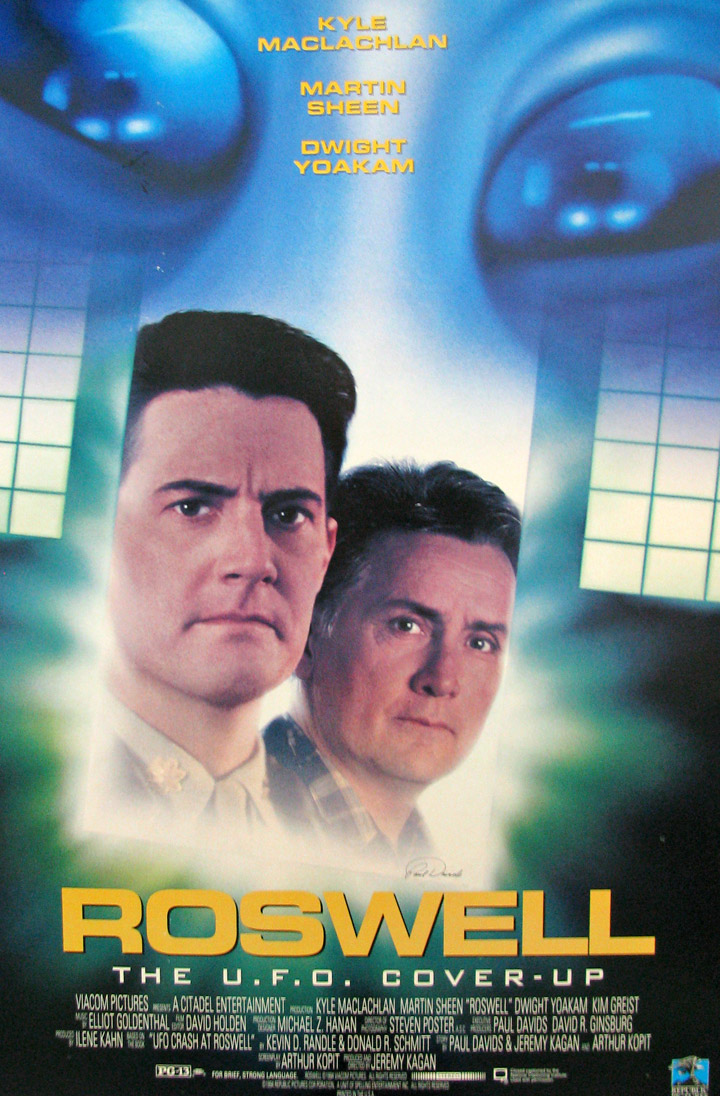
the film
No mention, except in passing, was made of the claim found in The Roswell
Incident that the Roswell aliens and their craft were shipped to Edwards Air
Force Base. The book established a chain of events with alien corpses seen at a
crash site, their bodies shipped to the Roswell base as witnessed by Dennis, and
then flown to Fort Worth and finally to Wright Field in Dayton, Ohio, the last
known location of the bodies (accounts assembled in part from the testimony of
Frank Kaufmann and Capt. O. W. “Pappy” Henderson).
The book also introduced an account from General Arthur E. Exon, an officer
stationed at the alleged final resting place of the recovered material. He
claimed there was a shadowy group which he called the Unholy Thirteen who
controlled and had access to whatever was recovered.[19] (p.231-234) He later
said:
“ "In the '55 time period [when Exon was at the Pentagon], there was also the
story that whatever happened, whatever was found at Roswell was still closely
held and probably would be held until these fellows I mentioned had died so they
wouldn't be embarrassed or they wouldn't have to explain why they covered it up.
...until the original thirteen died off and I don't think anyone is going to
release anything [until] the last one's gone."
Text from Wikipedia
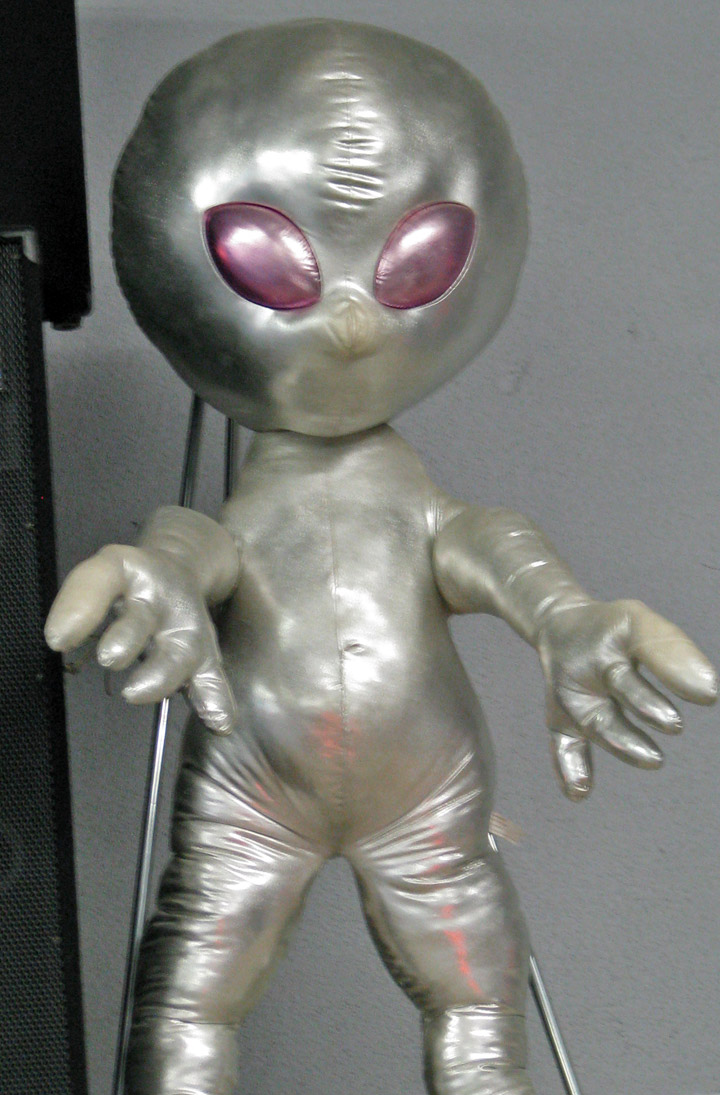
Do You believe in Me?